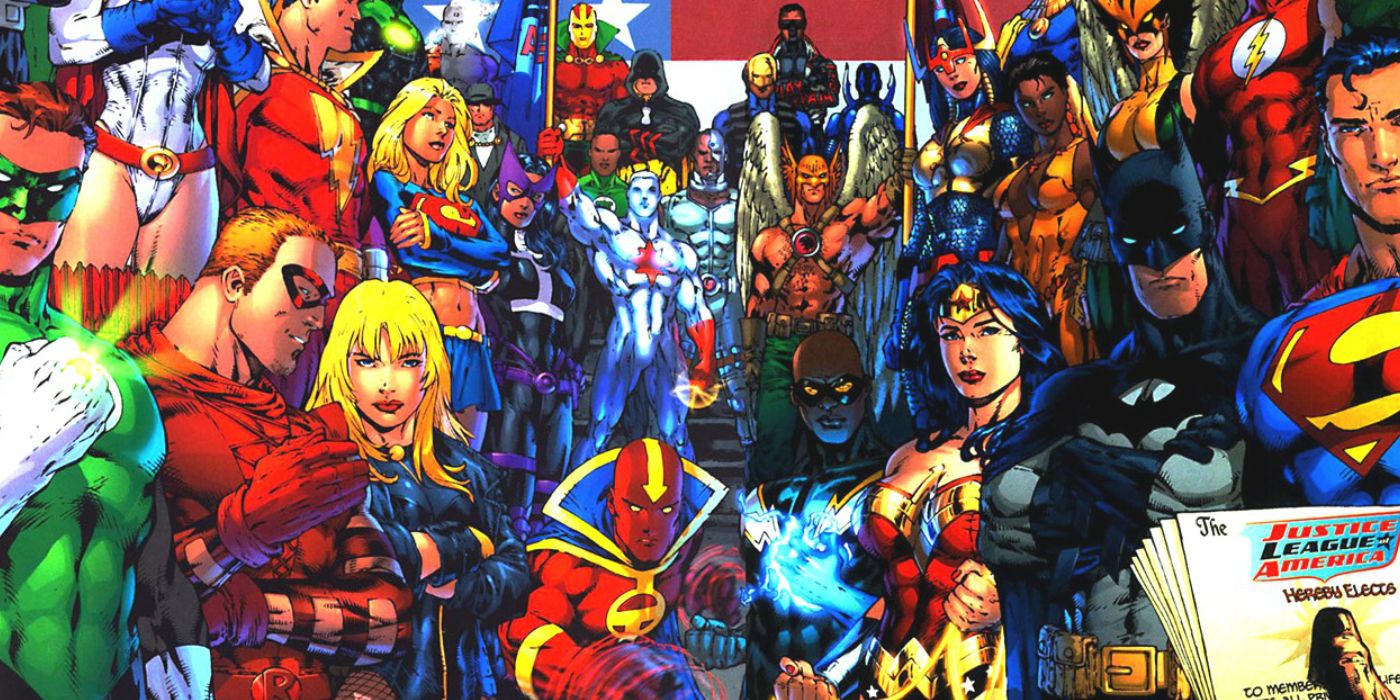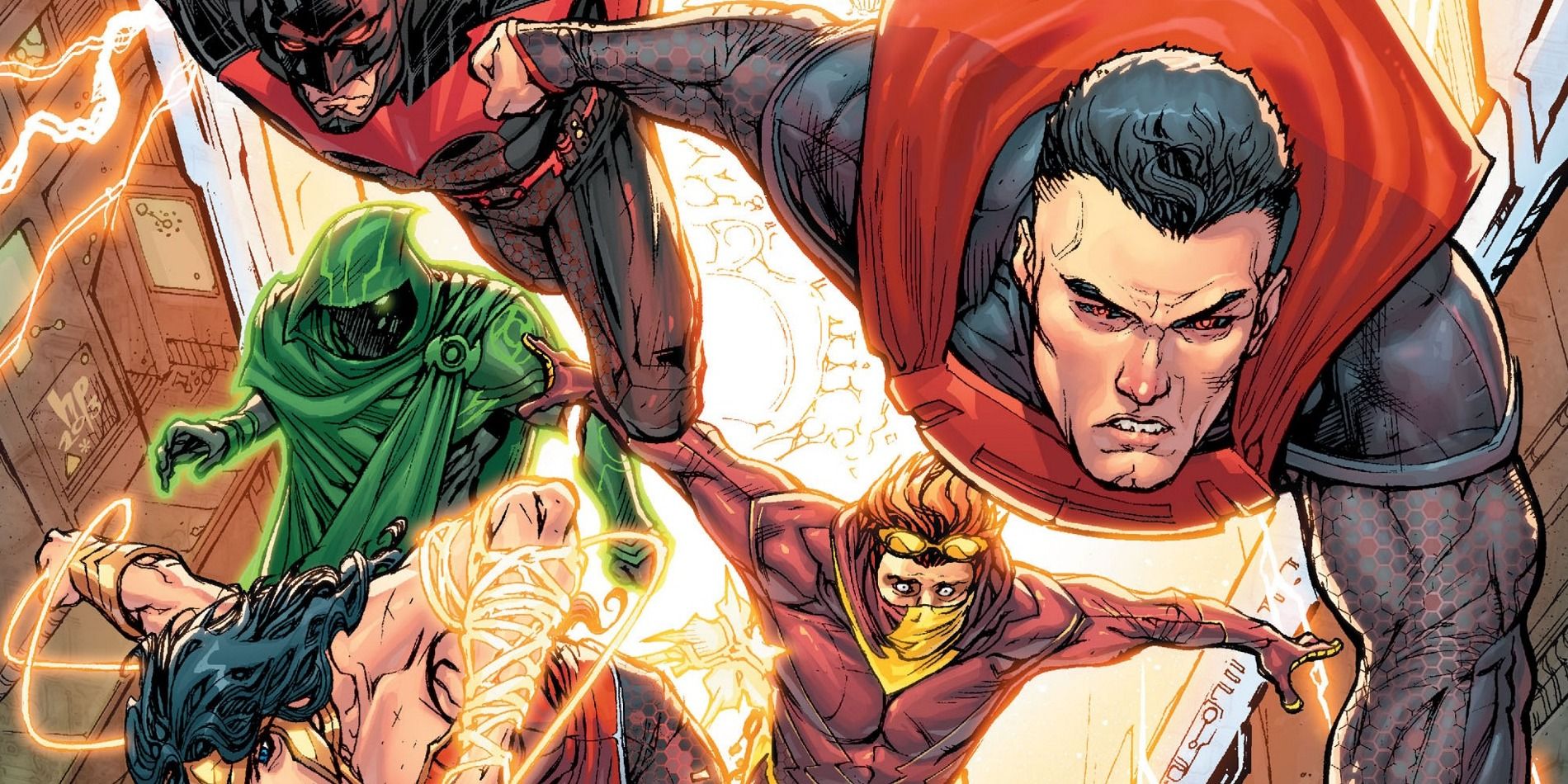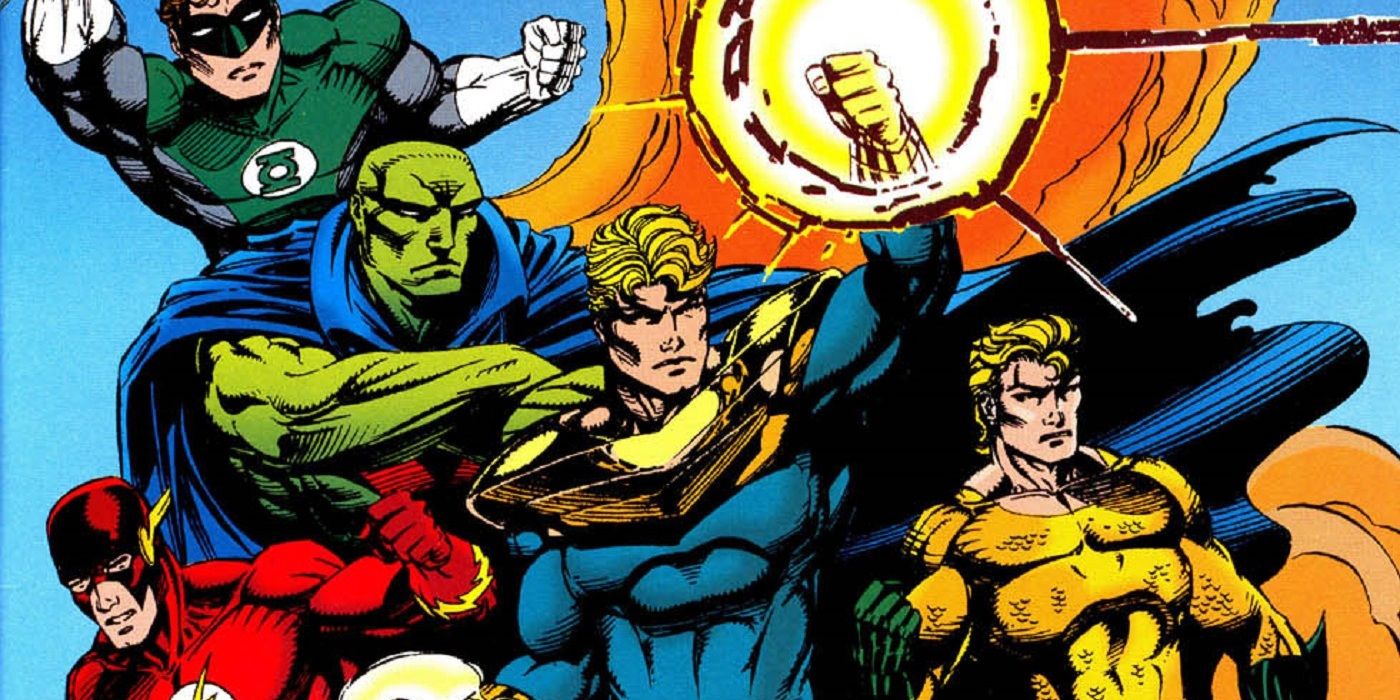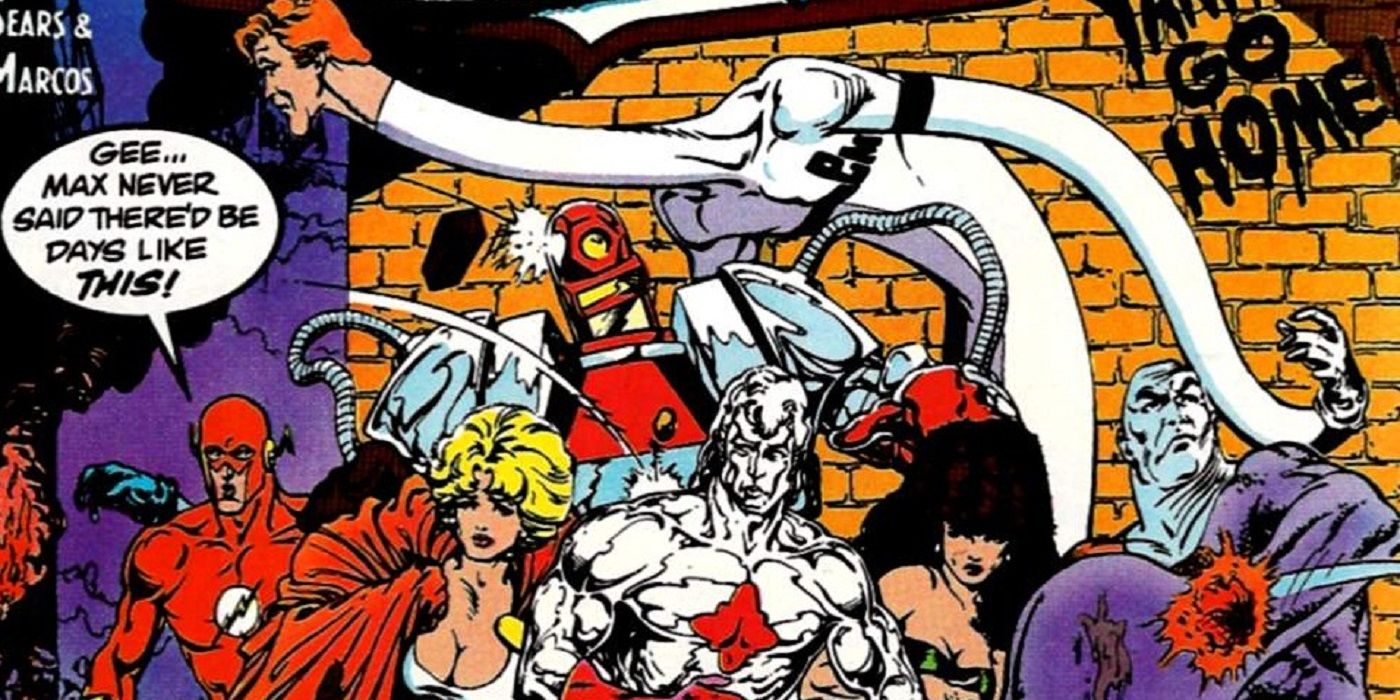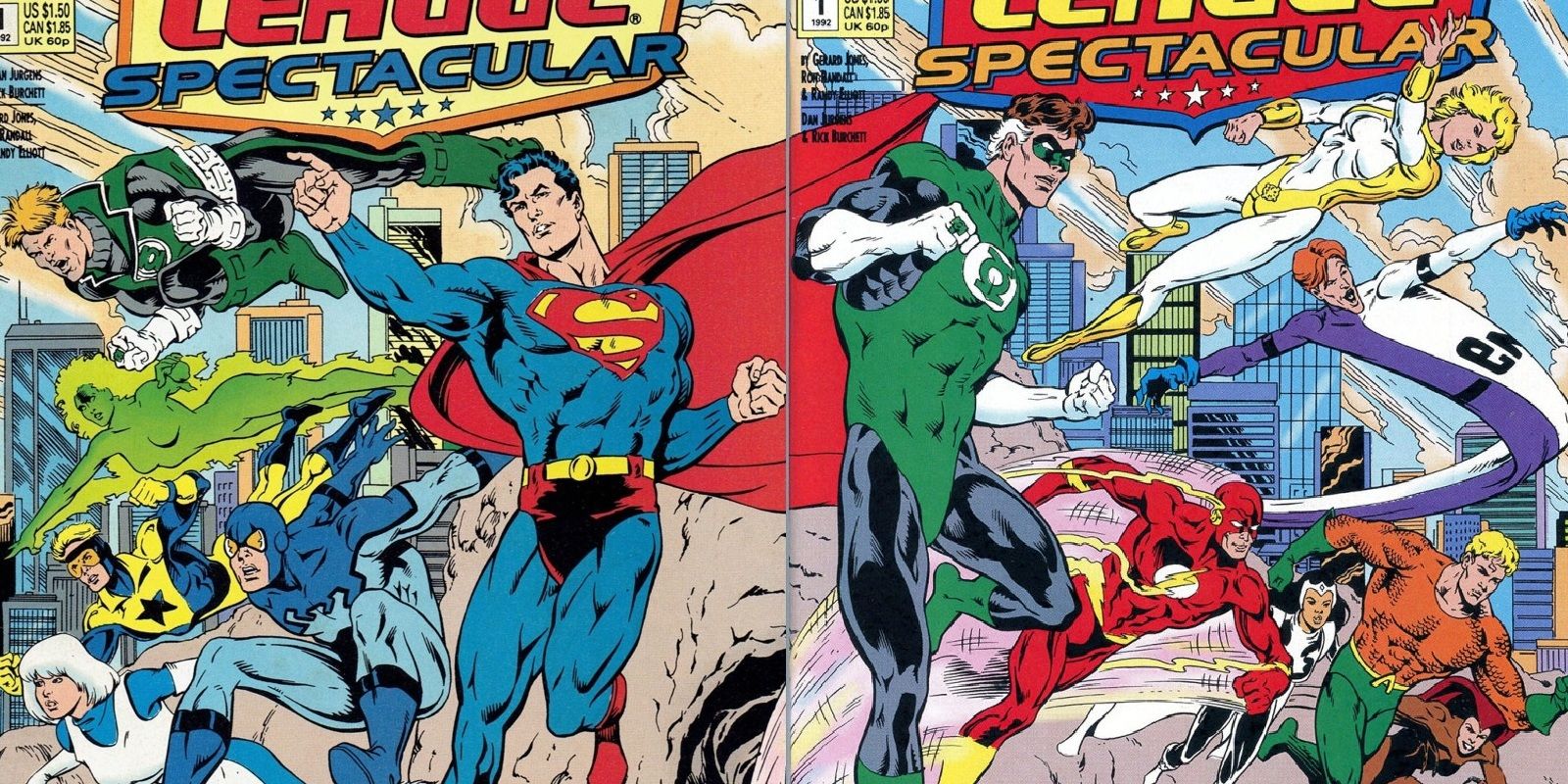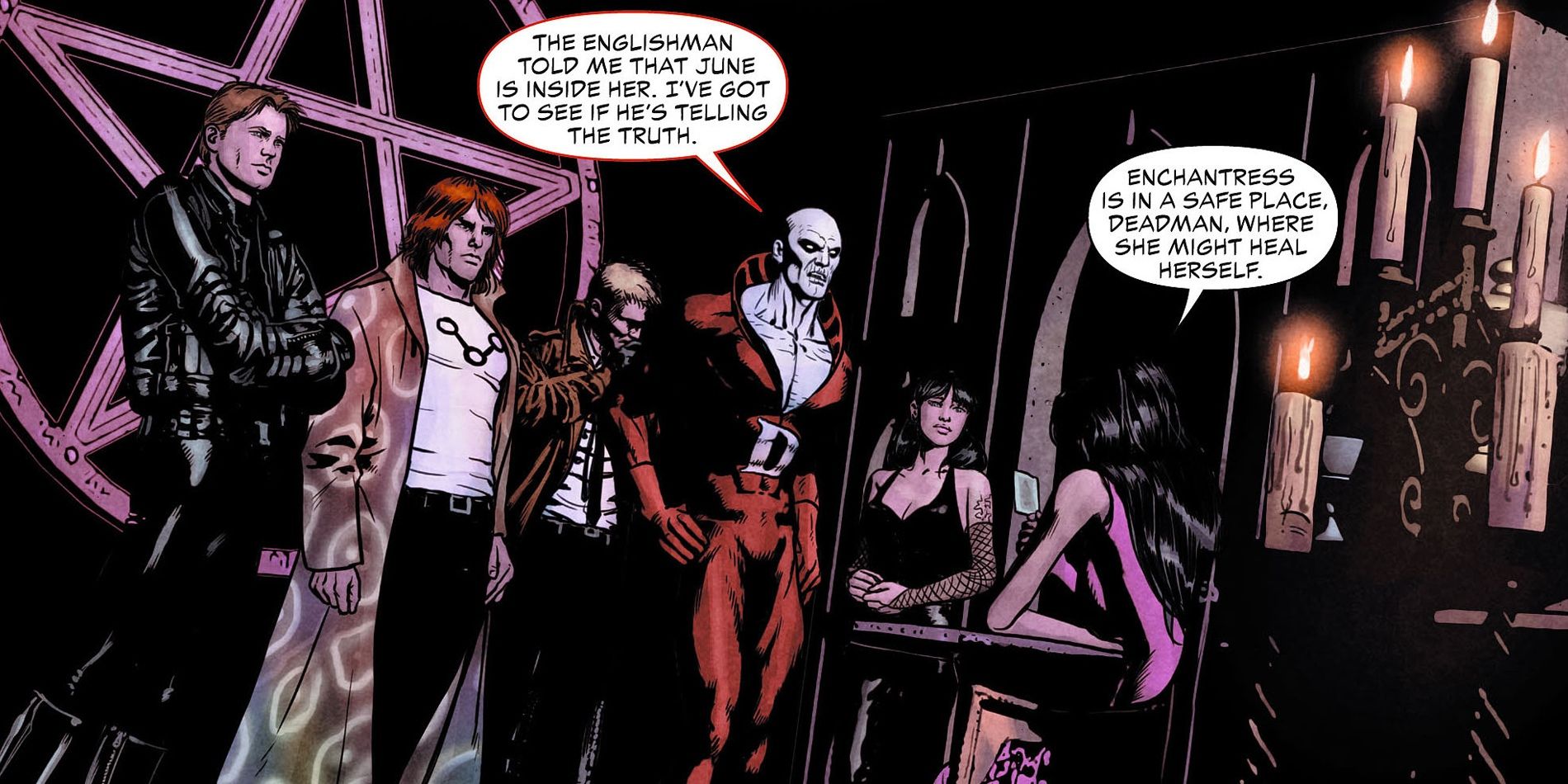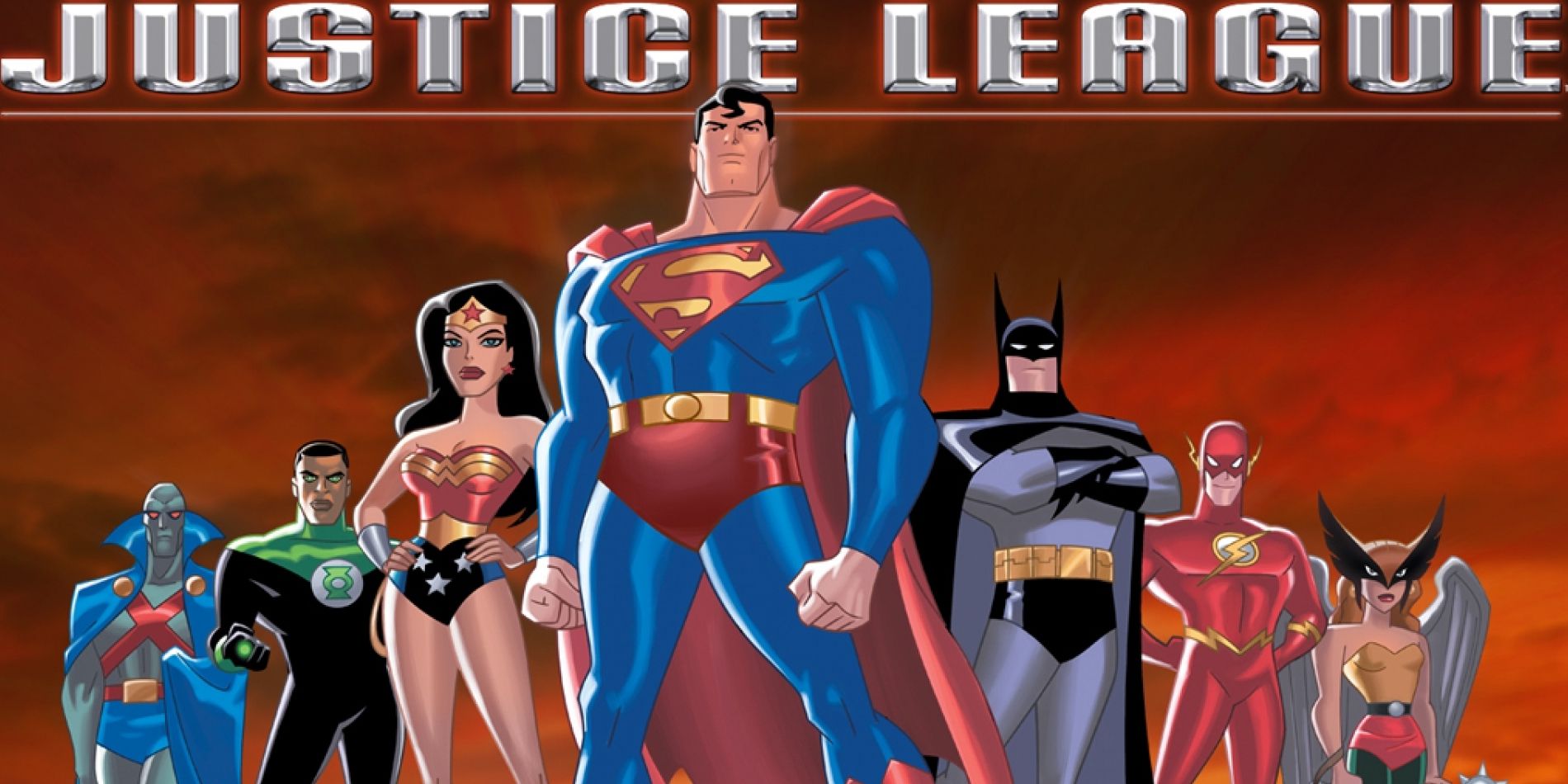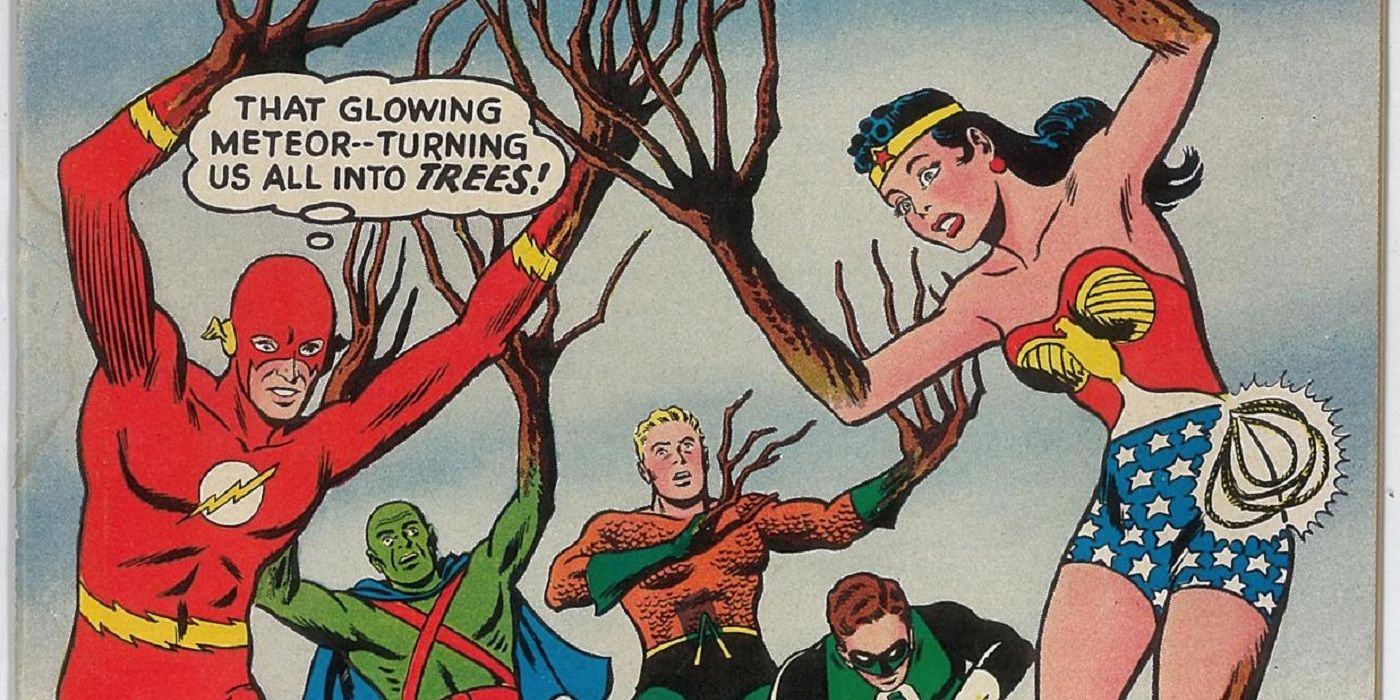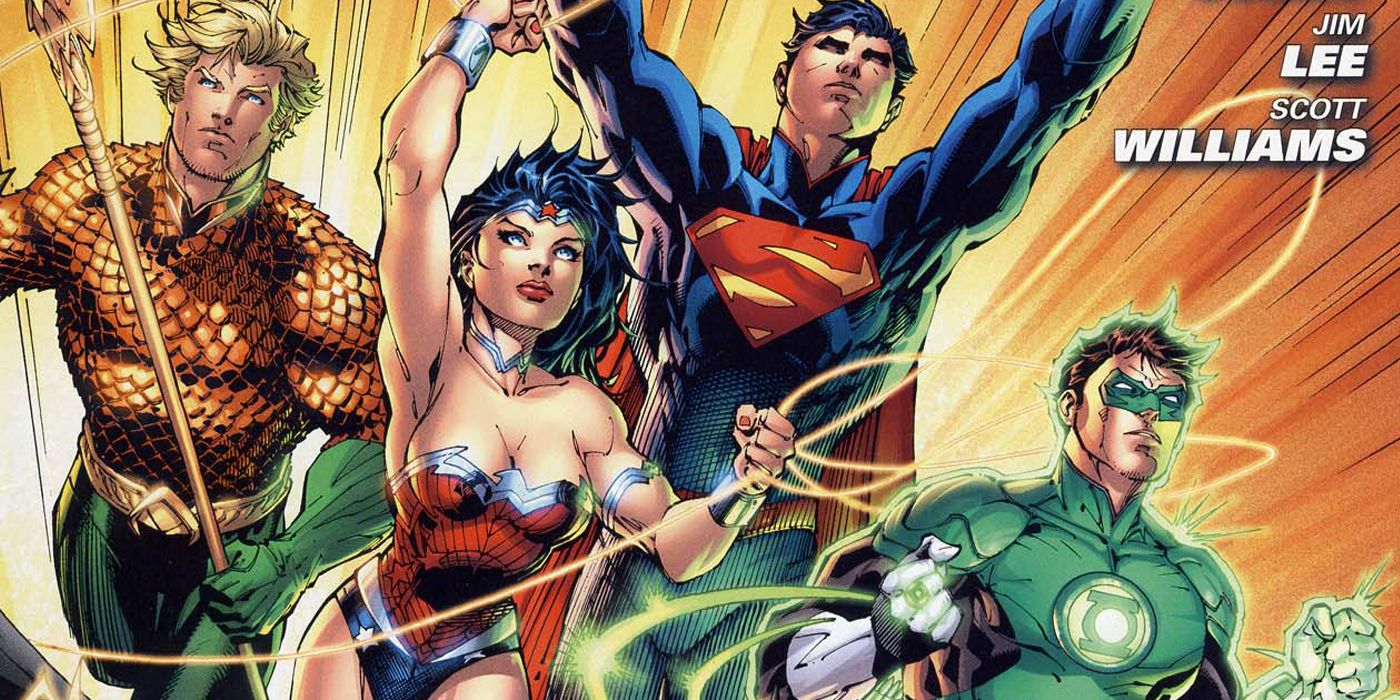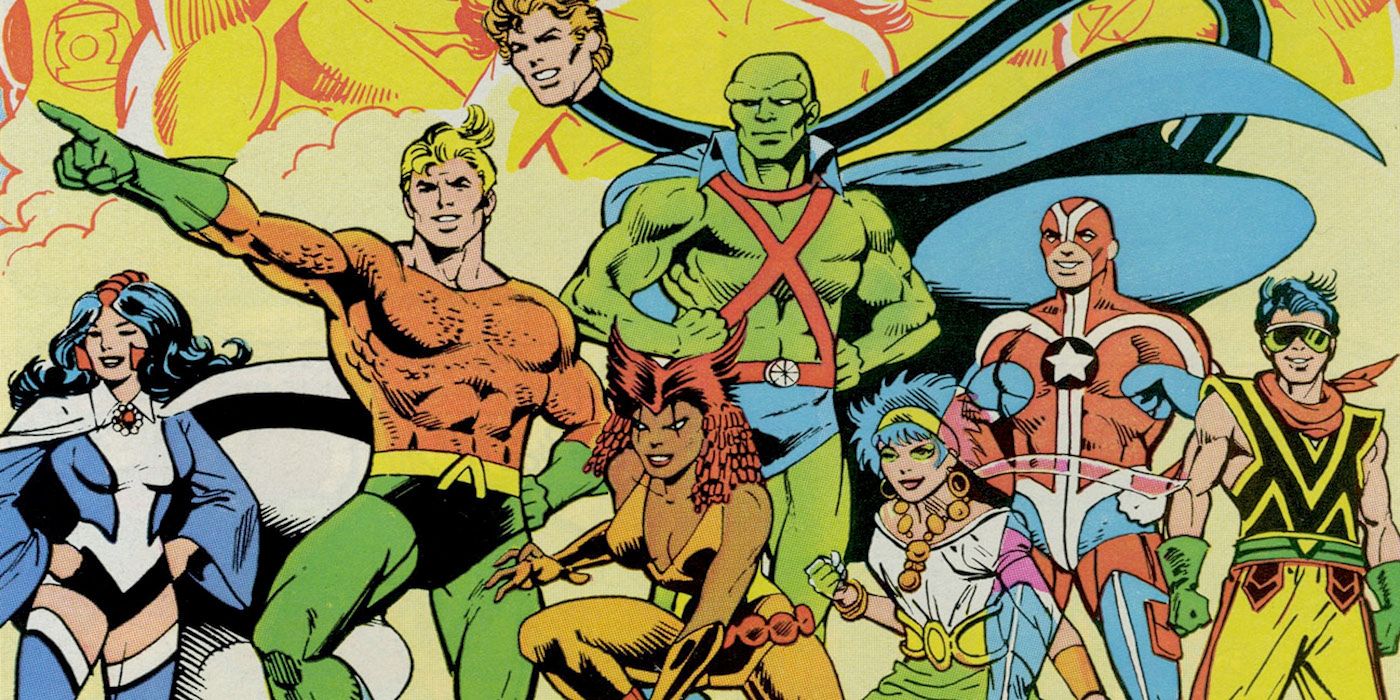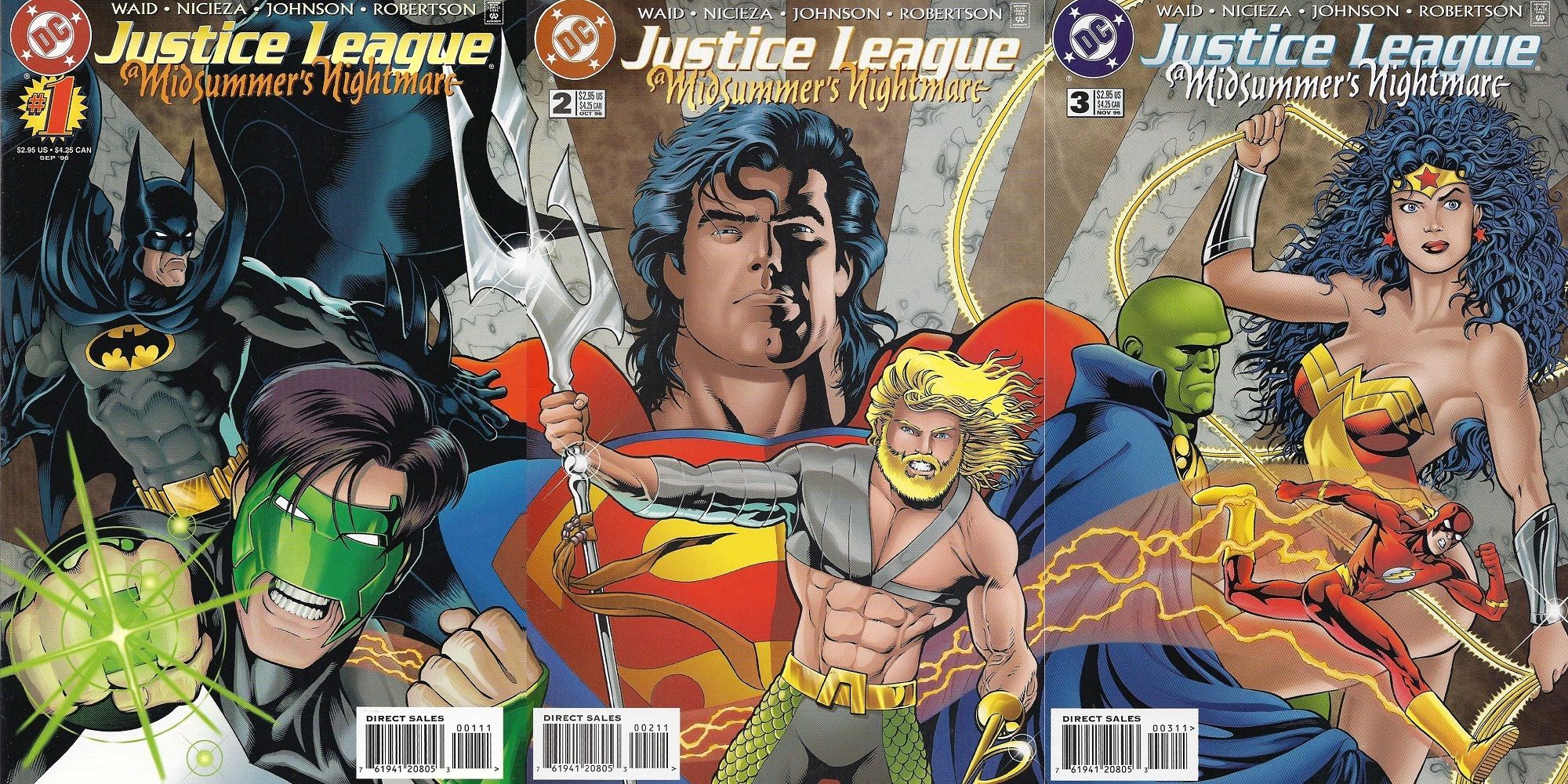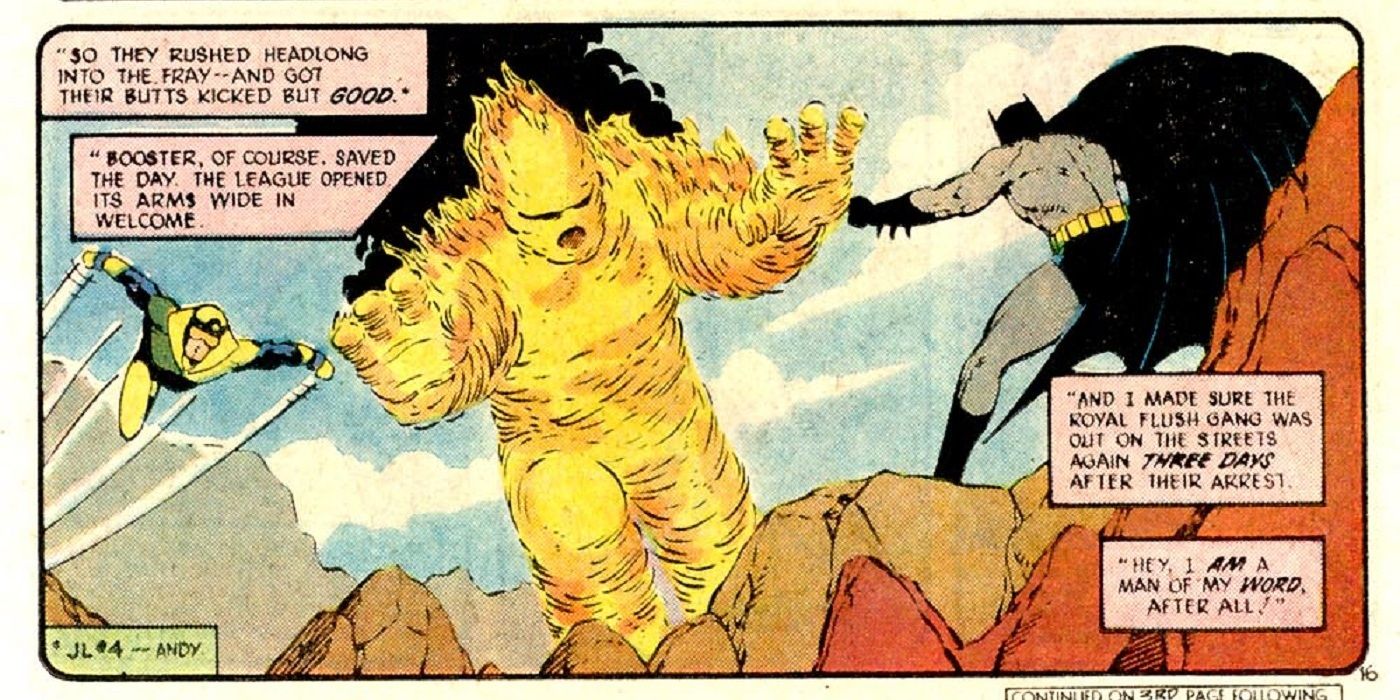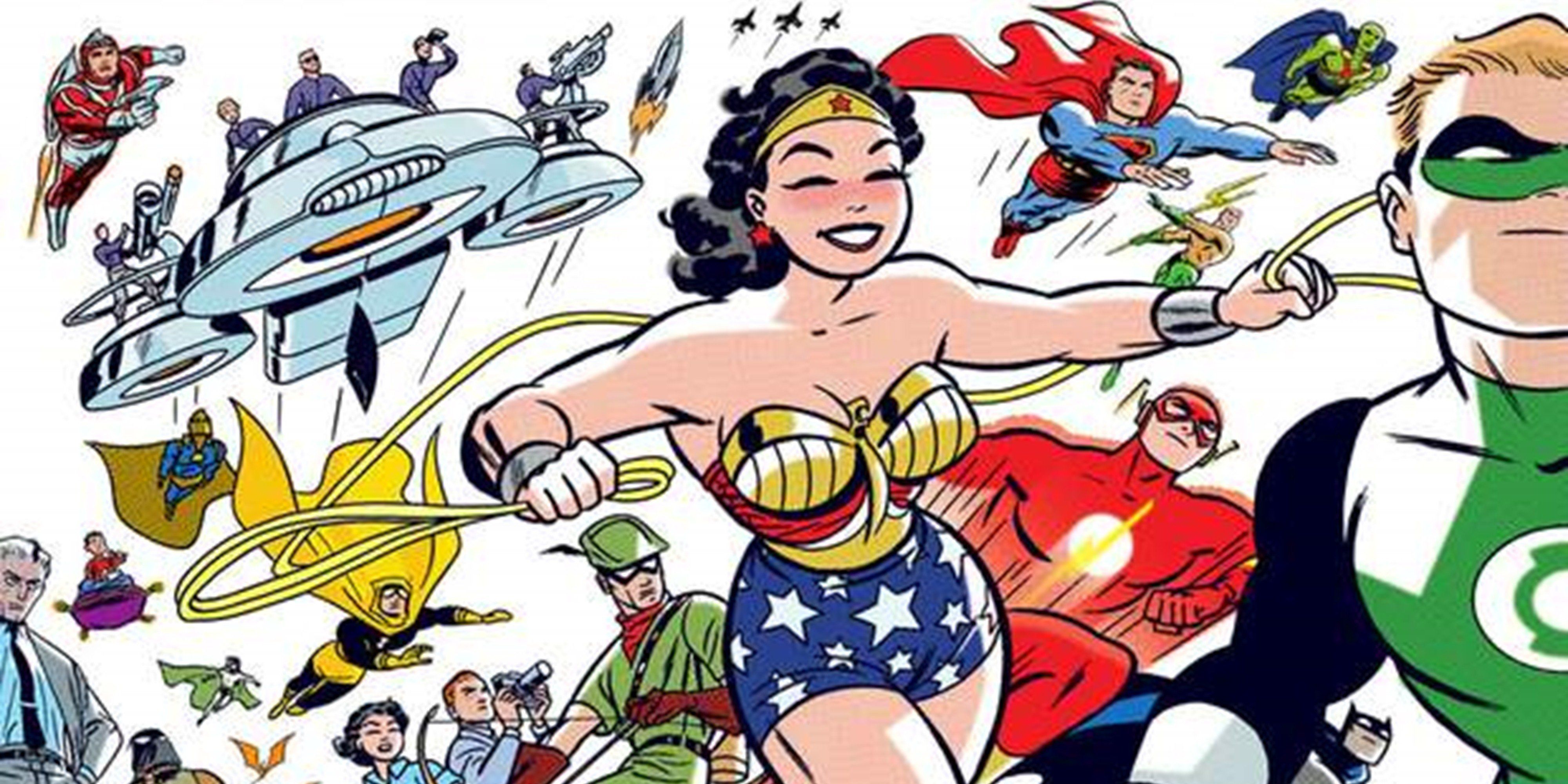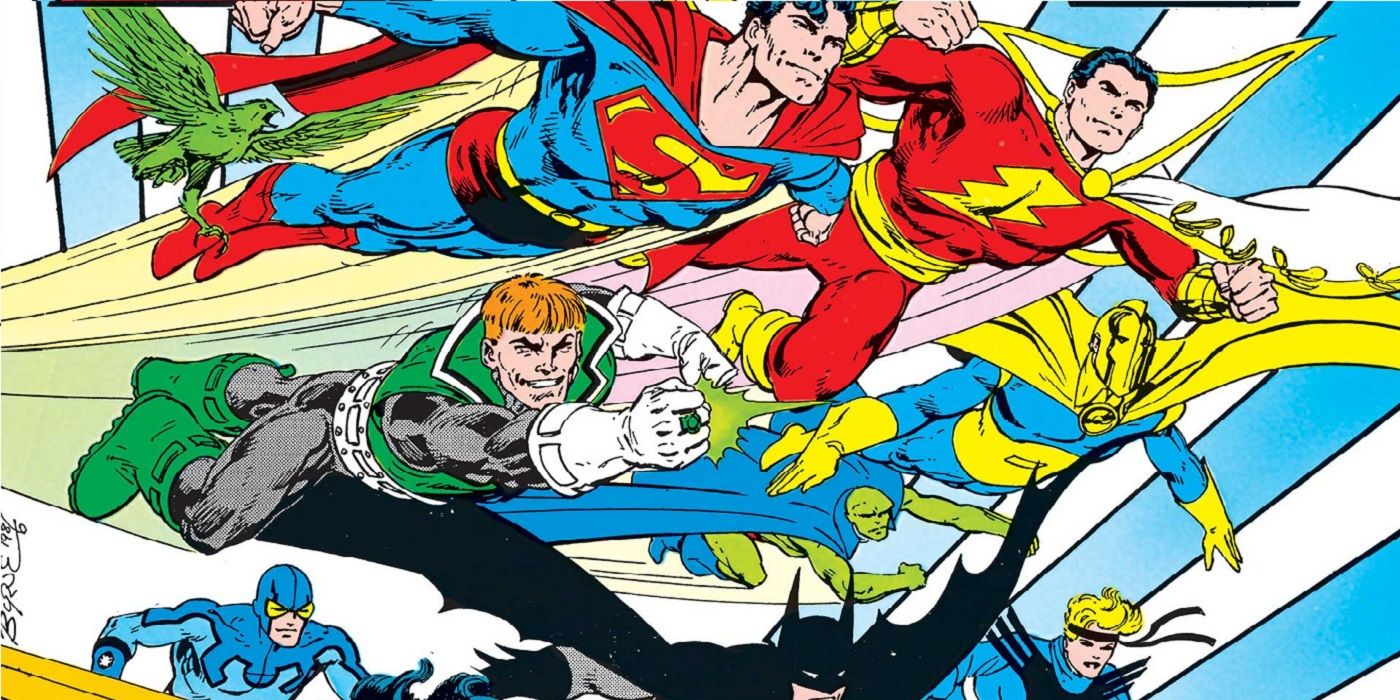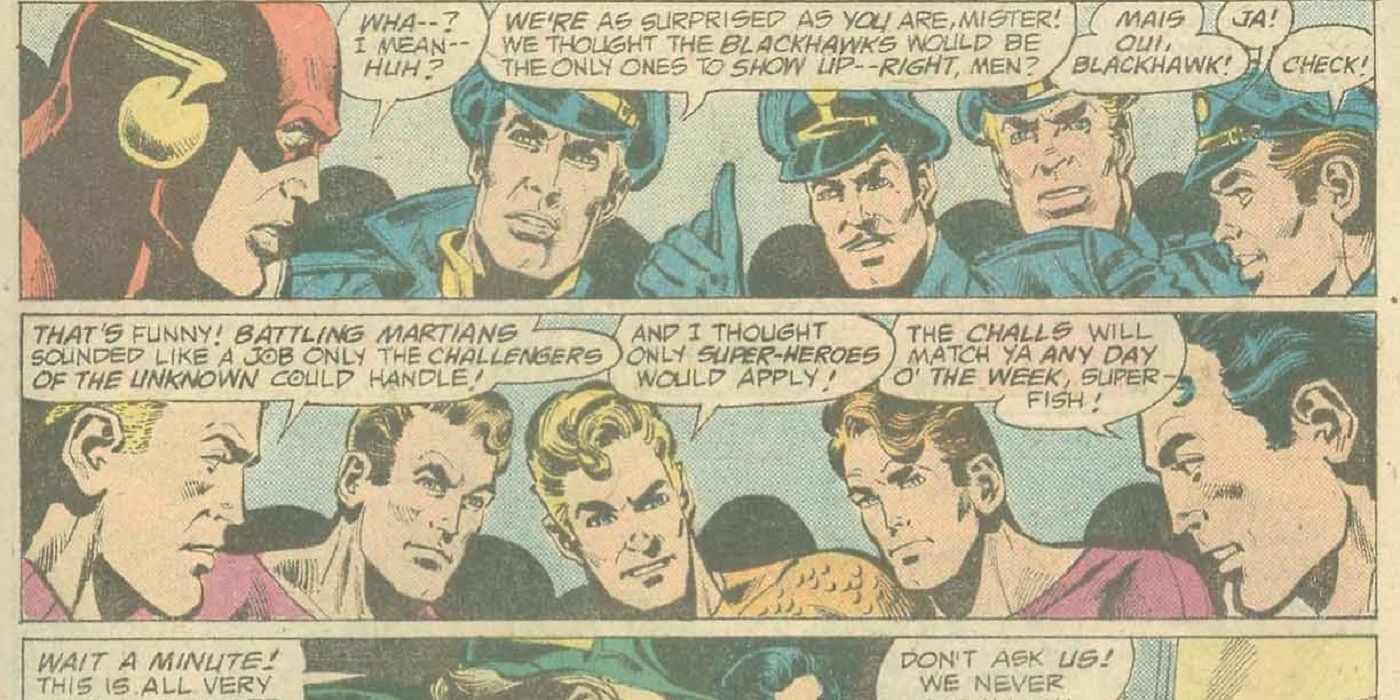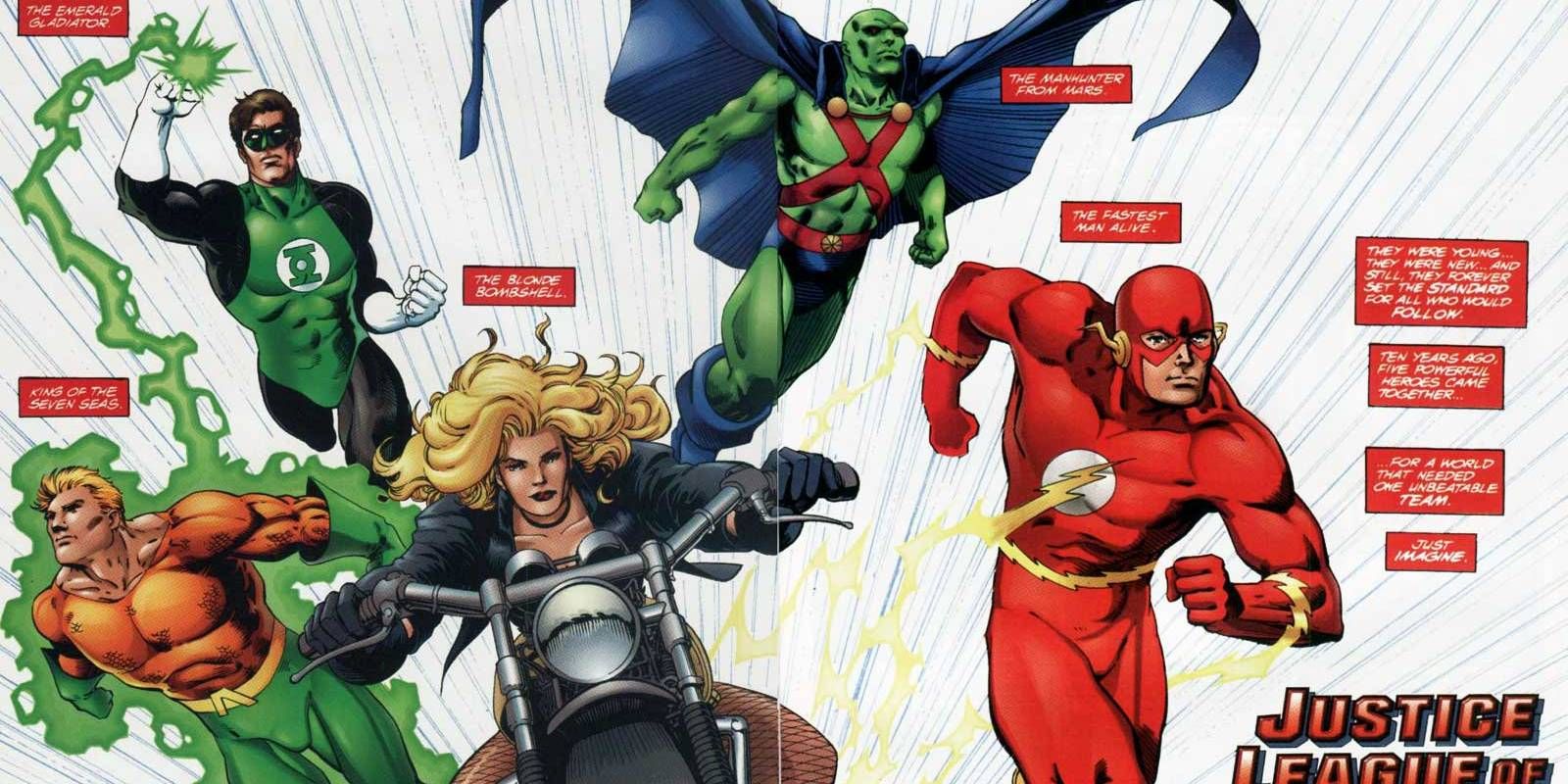"Just imagine! The mightiest heroes of their time ... have banded together as the Justice League of America to stamp out the forces of evil wherever and whenever they appear!" Those words, from DC's late-1959 house ads, helped make the company's new all-star group an instant hit. Ever since, the Justice League has been DC's number-one super-team. Its members include some of pop culture's most recognizable costumed characters; its headquarters have ranged from underground fortresses to lunar Watchtowers; and it's the subject of a big-budget movie coming this fall. However, for a long time the League came up short in one important area -- a decent origin story.
RELATED: Teen Titans: The 8 Best (And 7 Worst) Teams
When the JLA first appeared in February-March 1960's The Brave and the Bold #28, it apparently needed no justification. The mere thought of the "World's Greatest Super-Heroes" uniting against bad guys was enough by itself. Indeed, readers had to wait some two years for the League's origin to be revealed. After that, though, subsequent incarnations of the League made sure to explain why they were joining forces. While we wait for November for the cinematic League to form, today let's count down the best origins of the League from the past five decades.
15 JUSTICE LEAGUE 3000
After DC cancelled Legion of Super-Heroes, it was replaced in December 2013 with another 31st Century super-team -- and a very familiar one at that. The heroes of Justice League 3000 included Superman, Batman, Wonder Woman, the Flash and Green Lantern, apparently transplanted into the future with costumes updated appropriately. They turned out to be genetic duplicates (i.e., not quite clones), with the originals' DNA grafted onto anonymous recipients. The process wasn't entirely successful, making Superman an overbearing braggart (and a little less powerful) and Wonder Woman a bit more violent.
Complicating matters was the world into which the 3000 Leaguers emerged. This version of the future wasn't the Legion's utopia, but rather a darker galaxy run by corporate interests and plagued by malevolent forces. Naturally, it needed a Justice League -- even one grown in a lab -- to turn the tide in a better direction.
14 NOBODY REMEMBERS TRIUMPH
Revealed in August 1994's Justice League America #92, it was the origin that never happened. Superman, Martian Manhunter, Black Canary, Green Lantern, the Flash and Aquaman saved the world from an extraterrestrial attempt to mine the Earth's magnetic field. They were led by Will Macintyre, who hadn't yet chosen the codename Triumph, and whose super-powers derived from the aforementioned magnetic field. Under different circumstances, this would have been the story of how the Justice League formed -- except that Triumph's last, desperate attack put him and the aliens "out of phase" with the timestream.
Later, after fending off aliens from the planet Appellax, these heroes (except for Superman) banded together as the JLA; and the rest is history. Triumph -- who, honestly, was kind of a jerk -- popped out of the timestream 10 years later, joined the Justice League Task Force, and eventually became a villain.
13 JUSTICE LEAGUE EUROPE
Sometimes Justice League origin stories are as uncomplicated as any other fantasy draft. Although Justice League Europe was conceived around the time of the "Invasion!" event, its beginnings almost fell into this category. Thankfully, the double-sized Justice League International #24 (February 1989) gave the European team's origin an extra kick.
In true JLI fashion, it was a good news/bad news situation, as the League and its allies gathered for a post-invasion victory party. When a group of Khund stragglers showed up, a small army of heroes gave chase, but couldn't get to them before they made it into the League teleporters. Unfortunately for the Khunds, the teleporters were set to go to the destroyed Australian embassy. After recruiting a handful of heroes, Maxwell Lord and Oberon split the JLI into two branches, and sent eight of them to Paris as Justice League Europe.
12 JUSTICE LEAGUE INTERNATIONAL, TAKE TWO
The Keith Giffen/J.M. DeMatteis era of Justice League ended in 1992, so the Justice League Spectacular relaunched the two JLI titles. New creative teams (Dan Jurgens and Rick Burchett on JLA and Gerard Jones and Ron Randall on JLE) joined forces themselves for a tale of the Royal Flush Gang holding dignitaries hostage at a Disney-esque theme park. The Royal Flush Gang captured Superman using technology from the mysterious Weapons Master, but the vacationing Elongated Man got the word out to some ex-Leaguers and the day was saved.
Superman himself took charge of the new JLA (Blue Beetle, Booster Gold, Guy Gardner, Fire and Ice) while Green Lantern Hal Jordan headed up the JLE (Flash, Power Girl, Metamorpho, Crimson Fox, Doctor Light, Aquaman and Elongated Man). Batman floated between the two teams, and Wonder Woman helped the JLE occasionally. It all worked out well until Doomsday killed Supes and Hal turned bad.
11 JUSTICE LEAGUE DARK
As told in issues #1-6 of Justice League Dark (November 2011-May 2012), the team's origin was a mix of horrific visions and personal demons. After investigating an assault of mystical blonde clones and barely surviving a whirlwind of rotten, magically-sharp teeth, the main Justice League realized they couldn't stop the out-of-control Enchantress. Zatanna attacked Enchantress directly, while Deadman possessed her alter ego June Moone and Madame Xanadu sought to manage everything. Ultimately, they teamed up (sort of) with John Constantine, Shade the Changing Man and Mindwarp to reunite June and Enchantress. Xanadu then convinced them to work together and fend off the potential apocalyptic futures she kept seeing.
Although the team existed for only a few years, Justice League Dark used the League's all-star format effectively. It involved some of DC's best mystical characters allied against menaces only they could defeat; and its interpersonal dynamics only added to the suspense.
10 JUSTICE LEAGUE (DC ANIMATED UNIVERSE)
After 1992's Batman: The Animated Series, 1996's Superman and their subsequent "World's Finest" team-up, the next logical step for the DC Animated Universe was 2000's Justice League. The Flash and Green Lantern Kyle Rayner had already appeared on Superman, so Justice League's three-part origin story introduced Wonder Woman, Hawkgirl, GL John Stewart and Martian Manhunter. In a pretty straightforward adventure, the seven heroes teamed up to stop an invasion from Mars. While it might have been a little light on plot, who could deny the thrill of seeing an animated League?
Having Batman and Superman in one adventure together was one thing, but watching them bash bad guys with Green Lantern and Wonder Woman was exponentially more thrilling. More than a decade before the Marvel Cinematic Universe assembled its Avengers, the DCAU put together its greatest superheroes for a series which grew to include almost every major DC character (and several minor ones).
9 THE SILVER AGE'S APPELLAXIAN CONTEST
As mentioned above, readers of the original Justice League of America had to wait until February 1962's issue #9 to find out how the team formed. It wasn't quite an alien invasion, but a group of disparate Appellaxians who used the Earth for their own personal battleground. Each Appellaxian sought to create an army which mirrored its form -- so the stone giant turned people to stone, the glass creature created glass soldiers, etc.
Naturally, they were each defeated by a different superhero, until Aquaman, Wonder Woman, the Flash, Green Lantern and Martian Manhunter encountered the wooden Appellaxian. As it turned them slowly into wood, the five heroes worked together to break the spell and defeat their foe. Later, they discovered that Superman and Batman had stopped the final creature; and the seven decided to form "a club or society." Of course, we know which name they chose.
8 THE NEW 52
To emphasize the nature of the threats facing the relaunched DC Universe, writer Geoff Johns and penciller Jim Lee pitted their version of the Justice League against an invasion from Apokolips. In Justice League vol. 2 issues #1-6 (November 2011-May 2012), there was no attack from some random aliens, but a brutal Parademon assault which invited the heroes to respond in kind. First, though, they had to work through their own differences, as Batman wasn't in the police's good graces and Superman battled Green Lantern. Later, Batman rescued Superman from Apokolips, while Wonder Woman and Aquaman took on Darkseid personally.
With help from the Mother Box-augmented Cyborg, whose new origin was tied to the Apokoliptian invasion, the proto-Leaguers turned back Darkseid's forces. Although some were reluctant to commit, circumstances (plus Batman's pragmatism and the Flash's enthusiasm) convinced them otherwise; and DC's new beginning had its newest Justice League.
7 JUSTICE LEAGUE DETROIT
The Detroit League's origin started in Justice League of America vol. 1 issue #228, with a three-issue Martian invasion which all but destroyed the JLA Satellite. Thanks to the return of Martian Manhunter, the invaders were repelled, but it was tough. Since the team's most powerful members were otherwise occupied, a frustrated Aquaman exercised his right as a founding member and disbanded the League.
Relocating to the fortified Bunker below Detroit, Aquaman re-formed the group around a more committed core, which included Zatanna, Elongated Man, and new members Vixen, Steel, Vibe and Gypsy. The new League then battled the alien Overmaster and his evil super-group the Cadre, in a four-part arc. Called "Rebirth" (of course), it ran through issues #233-236 (December 1984-March 1985) and ended with the induction of the new members. While this League was far from perfect, it was careful to justify its existence.
6 A MIDSUMMER'S NIGHTMARE
Although Grant Morrison and Howard Porter chronicled the first three-and-a-half years of JLA, they didn't tell that League's origin story. It played out in the double-sized three-issue Midsummer's Nightmare miniseries (September-November 1996) over the summer of 1996. Writers Mark Waid and Fabian Nicieza, and artists Jeff Johnson and Darick Robertson, told the tale of a world remade by Doctor Destiny to eliminate the Justice League and give everyone else super-powers.
Naturally, a handful of ex-Leaguers (Superman, Batman, Wonder Woman, Aquaman, Martian Manhunter, the Wally West Flash and Green Lantern Kyle Rayner) snapped out of it. After defeating Doctor Destiny's squad of superhumans, they met Destiny's employer Know-Man. Empowered by an omnipotent Controller, he wanted the world full of super-people in order to repel the "ultimate warbringer," and charged the Leaguers with that responsibility. Four years later, in Morrison and Porter's final arc, the League did just that.
5 THE SECRET GOSPEL OF MAXWELL LORD
As told in Justice League International #12 (April 1988), Maxwell Lord IV was an ambitious businessman who wanted to make his boss's death look accidental. Instead, he was injured himself and brought back to health by a rogue Fourth World computer. When a new Justice League come together, Max saw opportunity. He had the computer create a high-tech signaler, recruited Doctor Light (Kimiyo Hoshi) and Booster Gold, hired terrorists as the new League's convenient first foe, and set up the Royal Flush Gang with a powerful android "Ace" that Booster could defeat.
Later, the computer created a killer satellite whose defeat led to the League's United Nations sponsorship; and it also recruited old League villain the Construct. Ultimately, Max rejected the computer and it turned on him; but he'd earned the JLI's trust and they saved his life. Max stayed affiliated with the League for several more happy years.
4 THE NEW FRONTIER
Darwyn Cooke's seminal 2004 miniseries was a period piece about the Silver Age of DC Comics, starting with wartime heroes and non-powered adventurers and ending with the mission that teamed many of them with the new generation of superheroes. It's not specifically an origin story for the Justice League, but one of its main plots centers around Hal Jordan being chosen as a Green Lantern around the same time that the world is threatened by a monstrous prehistoric island.
Indeed, the miniseries' climax involves GL, the Flash, Superman, Wonder Woman and Martian Manhunter; while Aquaman has an important cameo and Batman is a big part of the story as well. In an epilogue which surveys the superheroic community, we see them fighting Starro as the JLA. Nevertheless, whether the Appellaxians brought this League together or the island did it, New Frontier contains a stirring account of the group's creation.
3 LEGENDS
Before, during and after Crisis On Infinite Earths, the Justice League was the Detroit edition. However, the cosmic housecleaning let DC reorganize the team, so the Detroit League was disbanded via a crossover with 1986's Legends miniseries. That story involved Darkseid's flunky Glorious Godfrey using propaganda to build up public distrust among Earth's (well, America's) superheroes, and it culminated with a march on Washington where Godfrey and his robot hellhounds were going to convert the unconvinced.
Naturally, a group of superheroes including Batman, Black Canary, Blue Beetle, Green Lantern Guy Gardner, Martian Manhunter, Captain Marvel, and Doctor Fate defeated Godfrey's forces, prompting Blue Beetle to suggest that they stick together as the new Justice League. (Superman, Wonder Woman, Flash and Changeling were there too, but they declined gracefully.) Thus, Legends begat the Keith Giffen/J.M. DeMatteis/Kevin Maguire Justice League -- which of course did not share Legends' tone -- and the rest is history.
2 THE ORIGIN OF THE JUSTICE LEAGUE -- MINUS ONE!
In July 1977's extra-fun Justice League of America #144, writer Steve Englehart (with artists Dick Dillin and Frank McLaughlin) did a bit of math and realized that technically, the League's origin took place several months before Hal Jordan became Green Lantern. When an angry Green Arrow confronted GL and Superman about it, they told him the real story. J'Onn J'Onzz's arrival on Earth came during a period of extreme paranoia, and a stealth invasion by Commander Blanx's White Martians wasn't helping.
When the Flash saved J'Onn from an angry mob, they recruited other adventurers and super-people to stop Blanx -- including the Challengers, the Blackhawks, Robotman, Vigilante, Robin, Lois Lane, Jimmy Olsen, Rex the Wonder Dog and (of course) Aquaman, Batman, Superman and Wonder Woman. In the end, Hal was there too, at the rocket launch where the six superheroes fought Blanx. Realizing their collective effectiveness, a League was born.
1 JLA: YEAR ONE
Building on post-Crisis continuity, writer Mark Waid and artist Barry Kitson gave the original JLA an expanded origin-story epic. They took their cue from the classic Appellaxian contest, but augmented it to include a secret society called Locus. Waid and Kitson also worked in a nifty Doom Patrol team-up, teased the real billionaire behind the League's finances, exposed a "traitor" within the group and explored how the Leaguers' disparate personalities finally meshed into a formidable unit.
They finished the 12-issue maxiseries (January-December 1998) with a two-issue tale of how the Appellaxians returned, defeated just about every super-person on Earth, and were still thwarted by the Justice League. At that point, the League truly came into its own, and the Justice Society passed the baton of leadership to them. As a sweeping account of the League's ascension, we think Year One is the best JLA origin yet.
What's your favorite Justice League origin story? Let us know in the comments!

